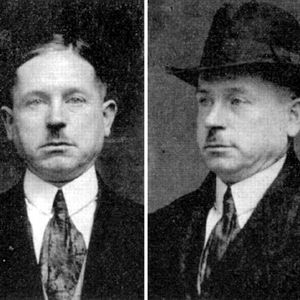Overview
Episodes
Recent Episodes
52 MIN
55 MIN
Tony Robinson
Photo source
Content note: murder, police brutality
With everything going on, I wanted to cover a murder-by-cop from 2015 that happened here in Madison. Tony Robinson was murdered by Madison PD Officer Matt Kenny - who murdered once before and is still on the force.
I lose my voice a little towards the end of this episode because it's a long one (that and I used my slightly-deeper-from-testosterone voice). Please listen with an open mind and without judgment going in.
There are resources below about racism, police brutality, and more. If you want to sign the petition to get Matt Kenny fired, you can do so here.
Episode sources
https://www.theguardian.com/world/2015/mar/13/tony-terrell-robinson-madison-wisconsin-police-shooting-how-it-happened
https://www.nytimes.com/2015/03/08/us/man-shot-dead-by-police-after-scuffle-in-wisconsin.html
https://madison.com/wsj/news/local/crime/more-than-three-years-after-tony-robinson-shooting-wheels-of-police-reform-turn-slowly/article_c9da662d-cd05-58ba-aab6-9fda64cd6c04.html
https://isthmus.com/opinion/opinion/another-tragic-police-shooting/
https://madison.com/wsj/news/local/crime-and-courts/madison-police-chief-mike-koval-announces-immediate-retirement/article_87d97d61-c030-579f-8175-550c6b86b515.html
https://madison.com/wsj/news/local/crime-and-courts/madison-mayor-eyes-mental-health-ambulance-condemns-police-response-to/article_29286e59-c57c-5cc1-96a2-918bcad88578.html
https://wkow.com/2020/06/07/madison-police-chief-responds-to-emails-about-8-cant-wait-campaign/
https://www.jsonline.com/story/news/local/milwaukee/2017/02/23/family-tony-robinson-man-shot-madison-police-receive-335-million-lawyers-say/98292352/
https://isthmus.com/news/news/tony-robinson-attorneys-release-lawsuit-documents/
https://isthmus.com/news/news/for-tony-robinsons-mom-life-and-grief-endure/
https://isthmus.com/news/news/tony-robinsons-mother-is-moving-to-california/
https://isthmus.com/news/news/this-is-not-a-riot/
https://isthmus.com/news/news/wake-up-madison/
PS: right after I posted this, our mayor
33 MIN
52 MIN




